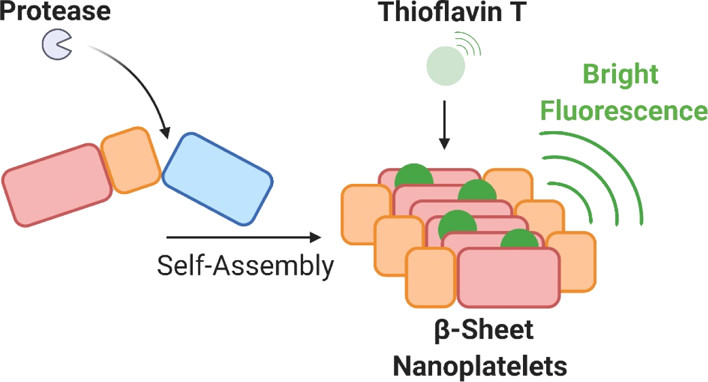Categories | Inventors
Technology Overview
OHSU # 2985 — Label-free fluorescent sensing of protease activity
Summary
The current technology offers advantages over existing protease probes, with lower background noise, simplified label-free synthesis, compatibility with any protease of interest and utility for translational research and clinical diagnostics.
Technology Overview
Dysregulated proteolytic activity is linked to many human diseases, including cancer, neurodegenerative disorders, and cardiovascular diseases. Currently designed protease activity probes often suffer from high background signal due to the incomplete quenching of the dyes. The current technology offers a new type of protease probe utilizing enzyme-instructed self-assembly (see Figure), which offers several advantages over traditional probes. Features of the current technology include:
- High signal ON/OFF ratio, allowing for increased sensitivity for the detection of protease activity.
- Simplified probe synthesis, without the requirement of labeling the protease substrate.
- Demonstrated utility in complex biological solutions, including human plasma.
- Utility for research and diagnostic purposes, with proof-of-concept studies for the detection of legumain activity, a cysteine protease that is over-expressed in several cancers.
- Versatility for any protease of interest, requiring only changes to the substrate portion of the probe.

Publication
Olson et al., “ Enzyme-Instructed Formation of β-Sheet-Rich Nanoplatelets for Label-Free Protease Sensing” ACS Appl. Nano Mater. 2021, 4, 8, 7800–7810. Link
Licensing Opportunity
This technology is available for licensing.
Inventors:
- Justin Plaut
- Srivathsan Ranganathan
- Adem Yildirim
- Bruce Branchaud
- Sean Speese
- Corey Dambacher
- Sarah Barnhill
- Emma Olson
Categories: